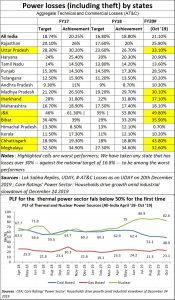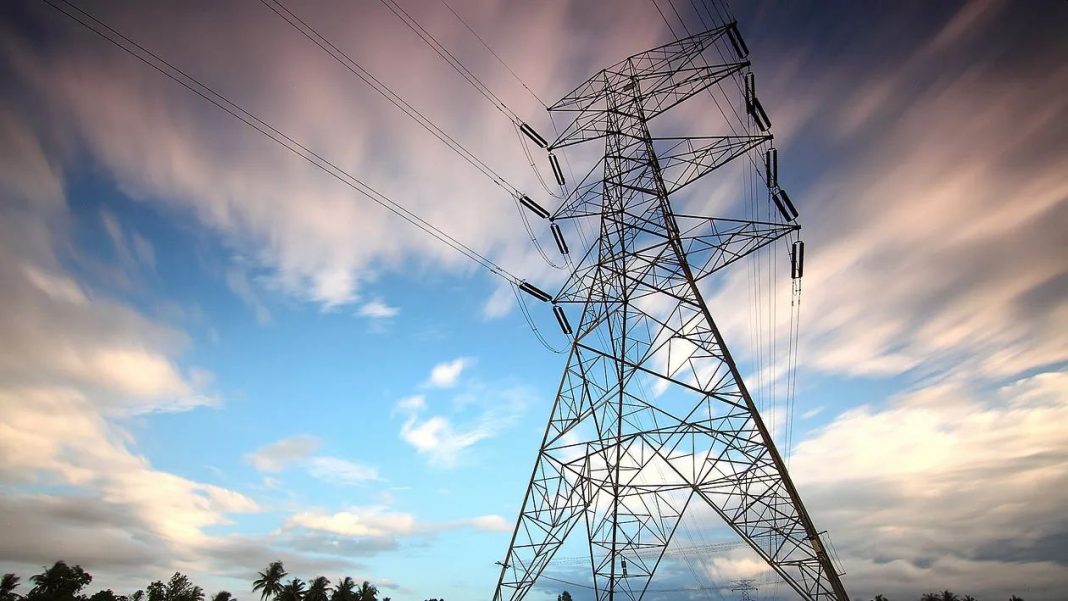https://www.freepressjournal.in/analysis/the-power-drain-in-india-by-rnbhaskar
The mismanagement of power in India
RN Bhaskar – 02 January, 2020
The sins of the past are finally catching up with the power sector. The energy situation has worsened, and could get worse, as policymakers hurtle from one blunder to another.
 In the beginning it was the belief that power subsidies could go on for ever. Even a bit of power theft here and there could always be ignored.
In the beginning it was the belief that power subsidies could go on for ever. Even a bit of power theft here and there could always be ignored.
The first serious effort to address this malaise was during the Vajpayee government, when the New Electricity Act was ushered in, and states were urged to rein in power losses.
But soon, power subsidies and power theft were allowed to rear their heads again. This was followed by clever methods to hide the losses under the carpet, especially with UDAY (Ujwal DISCOM Assurance Yojana) which was launched in November 2015 (http://www.asiaconverge.com/2018/09/discom-losses-continue-to-bleed-the-country/). Ironically, even Crisil – India’s premier credit rating company — touted UDAY’s virtues (https://www.crisil.com/Ratings/Brochureware/News/Discom-losses-to-nearly-halve-by-fiscal-2019-on-reforms.pdf). It had curiously overlooked two key numbers – the average cost of supply or ACS and the average revenue received or ARR. If the gap between the two increases, then the scheme is just not working. If the gap narrows, the scheme could be said to be working. And the truth was that this gap has kept increasing (for the country, barring a few states). The hole has become larger and larger.
As a recent CARE Ratings report pointed out, “Power generation during April-October 2019 recorded [just around] 1.5% growth at around 843 billion units (BU). . . . .The share of thermal power in the overall power generation has dropped to its lowest level since 1991-92 at 72.8% during the current financial year.”
What is even more interesting is that the industrial powerhouse of India, Maharashtra, which accounts for much of power consumption, saw power supplies down (by -5.6%) during the April-October 2019 period (compared to the same period in 2018). Ditto for Gujarat which saw power supplies fall by 3.9%. Clearly, the industrial engines of the country had begun to sputter. With an energy growth of just 1.5%, it is difficult to see how even a 4% GDP growth can be sustained.
Three problems bedevil the power sector, all of which are addressable, if only there is clear focus and political will.
The first is the inability of the government to usher in laws which allow the RBI to deduct the amounts due to power distribution companies (discoms) directly from the funds paid into state accounts. Instead of using its brute majority to usher in divisive agendas like the CAA (Citizenship Amendment Act), the government ought to have brought in more sanity into power revenue recoveries. The trouble is that when it comes to controlling power profligacy, often used as a means for winning elections, the knees of policymakers begin to buckle.
The second is the unwillingness of policymakers to realise that the maximum bang for the buck lies in promoting (off-grid) rooftop solar. There are several reasons for this. As Tripura showed last year (http://www.asiaconverge.com/2019/10/solar-energy%e2%80%88ministries-practice-deceive/), the average cost of providing grid connectivity to households is over Rs.2 lakh per household on an average. The cost of a rooftop solar installation is just Rs.50,000. Then there is the issue of supply reliability. Rooftop solar is more reliable as a source of power than grid power, because – for a variety of reasons, both technical and collusive — state engineers resort to power-cuts and shut-downs. Most rural folk thus prefer off-grid rooftop solar to grid-connectivity. The third is the economic benefit that comes from rooftop solar. It has the potential for creating over 80 million jobs within a couple of years (http://www.asiaconverge.com/2017/12/sabotaging-rooftop-solar-and-employment-generation/). It can actually generate employment – kickstarting small and medium enterprises at the grassroots level. And it reduces the cost of imports, as the country learns to depend less on imported fuels. Yet you find the government rooting for large solar farms, and even discouraging rooftop solar (Tripura too faced this problem – http://www.asiaconverge.com/2019/03/biplab-kumar-deb-has-big-plans-for-tripura/)
The third is the sheer unwillingness to adopt the private sector led decentralised-cluster power-schemes on a large scale along with waste-to-energy methane generation (http://www.asiaconverge.com/2016/07/solar-methane-better-days-ahead/).
It is when one looks at the madness that has been allowed to play havoc in the power sector, that one realizes how myopic India’s planners have been. The economic crisis that threatens to drag down India to the terribly painful 1990-91 levels can actually be averted.
If only India were able to focus more clearly ad urgently on economic issues than political smoke and mirror games, the country’s economy could be a lot more vibrant than it is currently.


































COMMENTS